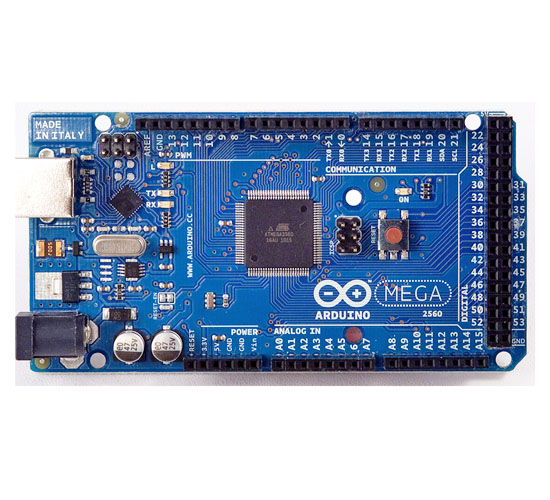
For more information on the Uno, check out this article. The Arduino Mega 2560 is a fantastic option for use in prototyping with ease, especially for 3D printers and robotics, where the Uno just doesn’t hold up. The Mega’s shield selection includes any shield compatible with the Arduino Duemilanove and Diecimila.
ARDUINO MEGA SOFTWARE
Using a shield gives your Mega board display options, Wi-Fi connectivity or even video game emulation software with relative ease. These preassembled PCBs interface directly into the Mega’s headers and give the board incredible capabilities in a condensed package. With it, anyone can add to or use the massive selection of codes to provide easy access to a world of programming possibilities.Īnother prominent feature of all Arduino boards, including the Mega, are the Arduino shields. The open-source coding terminal has a variety of features that make it accessible to both novices and programming gurus alike, most notably the IDE’s associated library of projects and other syntaxes created by the massive community of Arduino users. Like the Uno, the Mega operates in the Arduino Integrated Development Environment (IDE).
ARDUINO MEGA SERIAL
Arduino Mega 2560 Pinout DiagramĪs far as other hardware on the Mega goes, it also touts four serial ports for general attachments, a USB connection (with a dedicated ATmega16U2 processor for interfacing with your computer), a reset button and a power supply port. See the graphic below for a (dare I say) mega-map of the Mega’s pins. Because of its brawnier processor, the Mega has 54 digital I/O pins (15 of which can provide PWM output) and 16 analog pins, which is almost four times that of its little brother, the Uno. This board has the same clock speed as the Arduino Uno. Thanks to the ATmega2560 (and its associated crystal oscillator), the Arduino Mega sports 16 MHz clocking speed, as well as 256 KB of flash, 8 KB of SRAM and 4 KB of EEPROM. Arduino Mega 2560 is the latest version of the development board and the successor to Arduino UNO. The distribution of elements on the Arduino Mega 2560 - in the latest version of the board, reset button is near the USB connector.As stated before, the brain behind the Arduino Mega is the ATmega2560. To help you get started with the module, we have prepared a tutorial about the installation and first run of the Arduino environment. The connected led on pin 13 allows debugging of simple programs.īuilt-in voltage regulator provides power to external devices with the voltage of 3.3 V with current consumption of 50 mA. The IOREF Pin provides direct access to the voltage with which I/O outputs work. The module has ICSP outputs for connecting an external AVR programmer. Arduino has a system that protects the socket from short-circuit and the flow of too large current.

The tile can be powered from a computer via USB cable, bearing in mind that the maximum power load for the USB port is 500 mA. To power the Arduino, you can use any power source with a voltage from 7 V to 12 V with DC connector 5.5 x 2.1 mm. The Atmega2560 chip with a clock signal with a frequency of 16 MHz, has 256 KB Flash memory, 4 KB EEPROM and 8 KB SRAM memory.

Some of the pins have special functions which brief description is available in our guide. The device supports popular network interfaces, including UART, I2C and SPI.

to control the motors and for brightness control of the LEDs.ġ6 inputs of integrated analog-digital transmitter with a resolution of 10-bit, supports, in particular, sensors with analog output. The maximum power load for a single output is 40 mA.ġ5 PWM outputs allow e. The distribution of connectors allows the installation of special caps, so-called Arduino Shield.ĥ6 digital inputs/outputs allows, in particular, to control the LEDs, relays and reading the buttons' states. Thanks to installed bootloader, to programm the device, you only have to use appropriate USB cable and software from manufacturer's website.
ARDUINO MEGA BLUETOOTH


 0 kommentar(er)
0 kommentar(er)
